Kirby and the Forgotten Land is quintessential Nintendo in all of the best ways. Like The Legend of Zelda: Breath of the Wild and Super Mario Odyssey before it, it arrives on Nintendo Switch as an outstanding evolution of its franchise. Developer HAL Laboratory has crafted a wonderfully fun, imaginative, and exciting platforming adventure that will delight players of all ages, even the ones who don’t usually play Kirby games.
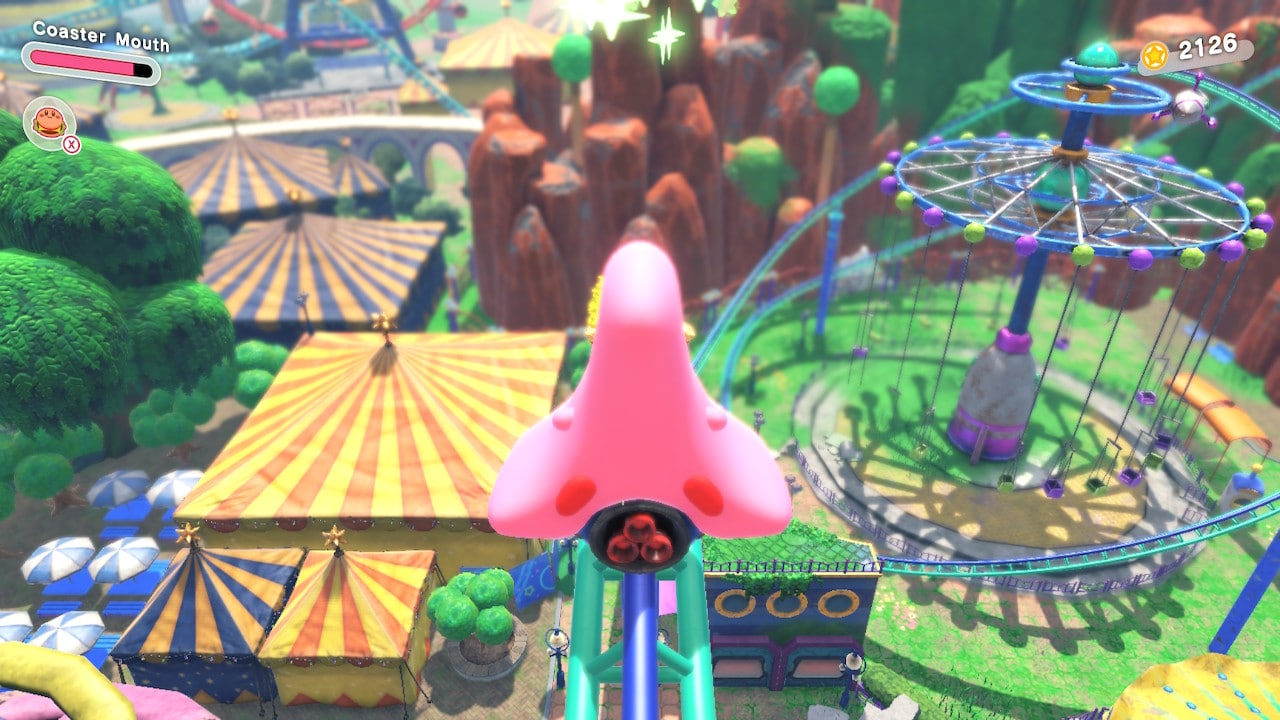
Kirby Goes Full 3D to Dramatic Effect
This time around, Kirby has broken out of his 2D sidescrolling origins for a full 3D adventure. Levels are still self-contained and largely linear, like in Super Mario 3D World, but each level employs meticulously crafted game design motifs and lots of enticing little secrets that reward curiosity. Each world feels exceedingly distinct as well, in both atmosphere and gameplay. The amusement park world is a bright and cheery delight, with roller coasters and car races, yet later you arrive at an oppressive industrial area whose exterior looks like Midgar from Final Fantasy VII.
The art design is just beautiful across the board, and the graphics are solid by Nintendo Switch standards. Things in the distance sometimes look blurry, and anything that is far in the distance seems to animate at half the normal frame rate by design. None of that bothered me though, and the fixed camera does an excellent job of showing you precisely what you need to know. It’s also deft at showing you just enough of secret areas off-screen, cluing you in that you should investigate those alcoves more closely.
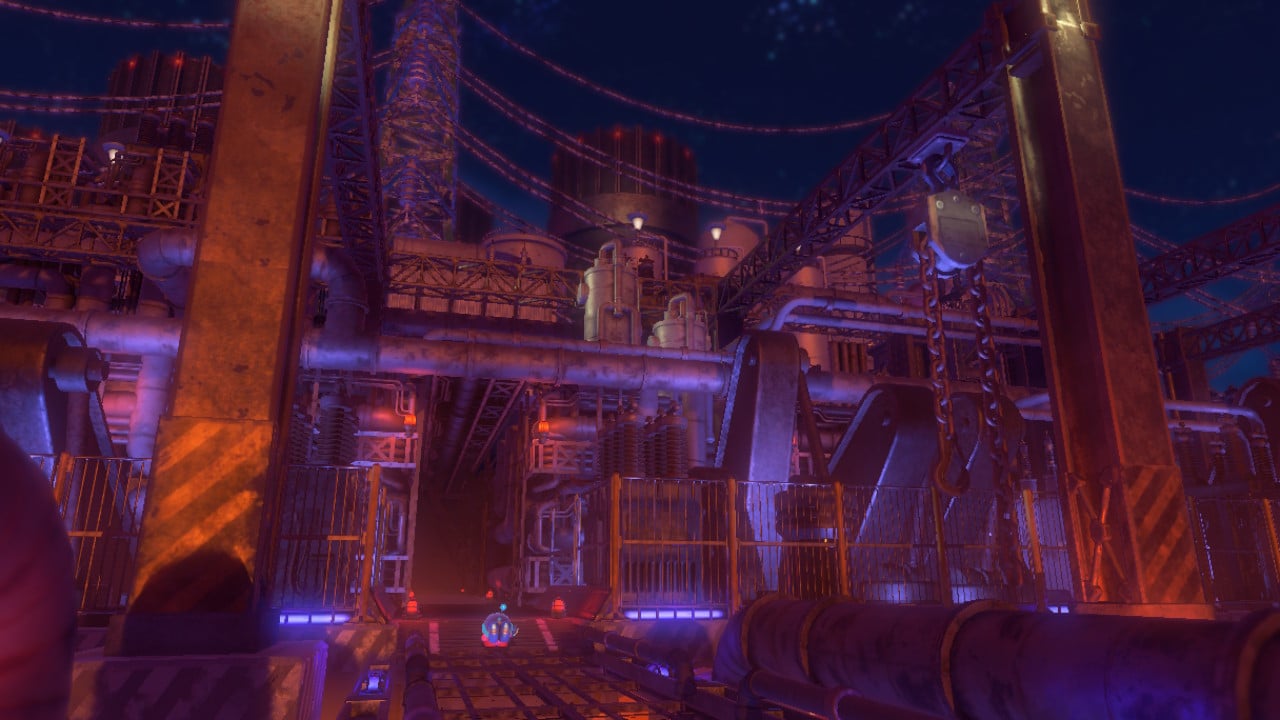
There are roughly six worlds in total, typically with four levels and a boss fight, but some remixed, more challenging levels unlock after beating the game that are even more fun. One playthrough takes roughly 20 hours, but going for 100% completion will take at least a few hours longer. Waddle Dees are the main collectible of the game, who will rebuild Waddle Dee Town and unlock new areas when you rescue them. Sometimes Waddle Dees will appear caged in plain sight in levels, while many more can be obtained by completing secret tasks in levels that reveal themselves over time. Some, like beating a boss without taking damage, can prove a challenge.
In Kirby and the Forgotten Land, Kirby can make use of basically 12 different powers that he can absorb from enemies or take with him from a shop in Waddle Dee Town. You can do things like swing a sword, become a tornado, spit fire, shoot a laser gun, or (as a one-time deal) nuke everybody on screen. You can spend coins and a special other currency to upgrade all of your powers more than once, giving them dramatic new effects and sometimes hilarious animations.
Several of the powers have not just a range of distinct attack capabilities but also mobility capabilities. For instance, upgraded ice powers will let you both freeze enemies and skate over water, and there are times where both are quite useful. The most upgraded tornado power will let you go flying across the screen, massacring everything in your way. Kirby will feel extremely powerful by the end of the game, in a really fun way.
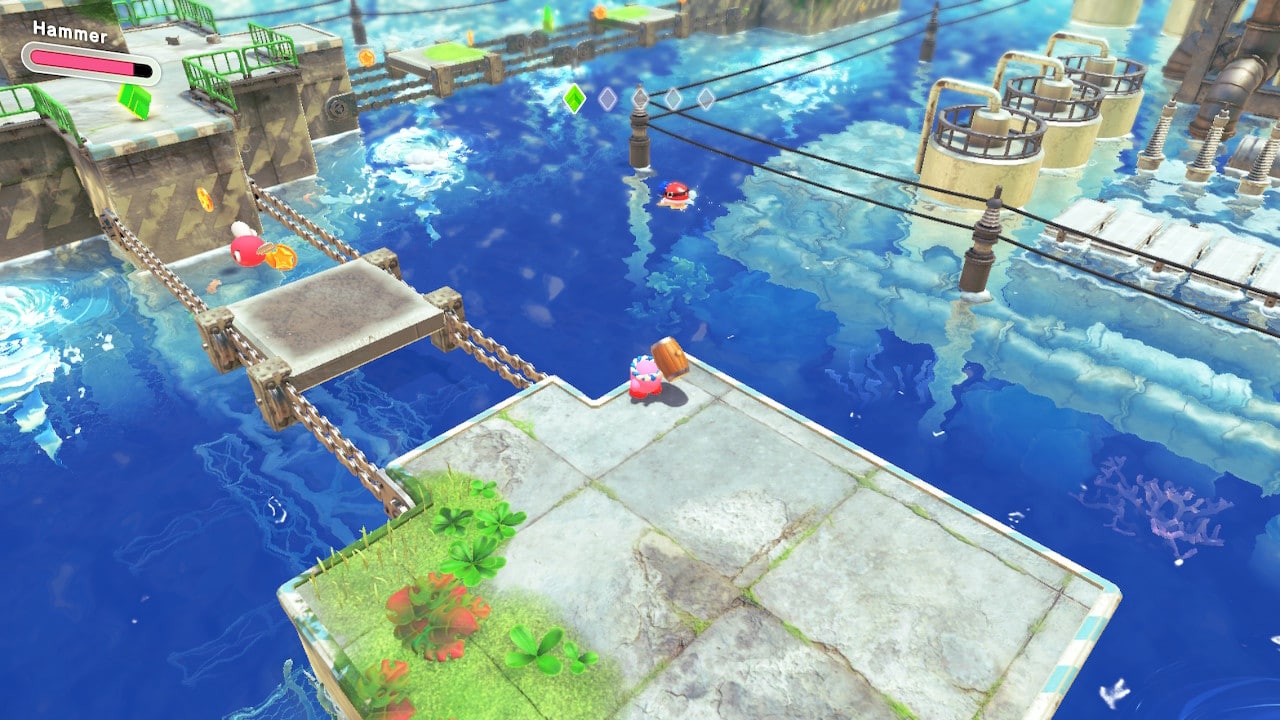
Yet the biggest addition to Kirby and the Forgotten Land is the silly new Mouthful Mode, which lets Kirby fit his entire body around random objects like a vending machine, a cone, a car, and some things that are best left a surprise. The fact that most of these objects are so extremely frivolous makes it all the more delightful when they have clear and useful gameplay capabilities. For instance, you can flip the cone on its pointy end to smash through cracks in the ground, opening access to new areas. Intuitively, you will fast understand exactly how to use each object to solve puzzles and defeat enemies. Mouthful Mode is the best example of HAL creating innovation out of, in some cases, literal junk.
However, despite the awesome variety in the gameplay, the controls are quite simple. All of the L and R buttons do the same thing — Crouch Guard — and there are dedicated buttons for attack/absorb, jump, relinquishing an ability, and using an optional item to restore health. Sometimes I fumbled over trying to quickly relinquish one power to take another, but that seemed more like my fault than the game’s problem. However, I admit I had almost finished the entire game before I finally realized that you can “dodge” by tilting the control stick in any direction while using Crouch Guard.
The fact that I made it so far while missing an ostensibly major mechanic goes to show how forgiving Kirby and the Forgotten Land often is. The game comes with two difficulty options, the Spring-Breeze Mode, which gives you tons of health, and the “harder” Wild Mode, which gives you more coins while you play. However, the game is still extremely generous with how much damage you can take even on Wild Mode, so probably only children and newcomers will struggle with anything except the later worlds.
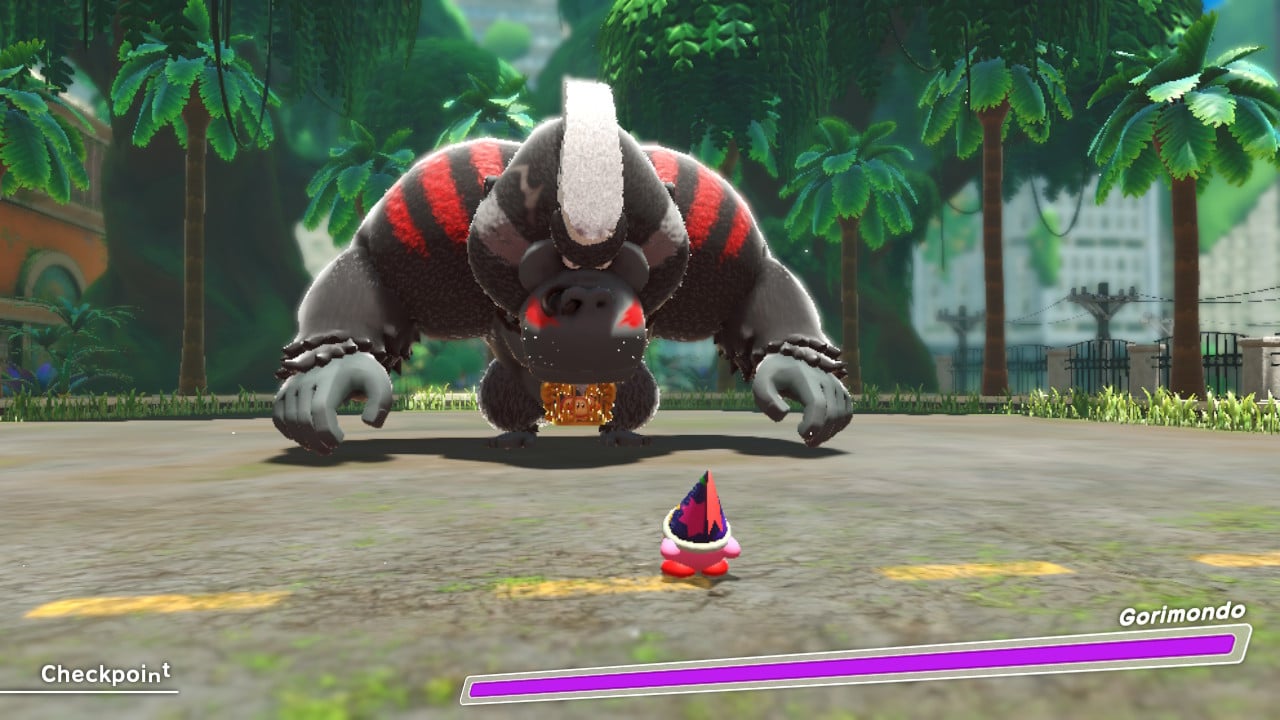
Regardless, all of the boss fights are fun and memorable. They’re not necessarily innovative, but fighting bosses with different powers invites different strategies, which offers a lot of opportunity for player expression. Some of the endgame bosses will require legitimate skill to defeat, though using the long-range Ranger ability often makes things easier. Bringing an aforementioned health item into battle with you also removes a lot of difficulty, since a Maxim Tomato can restore health completely.
Plus, the entire game can be played in co-op with the second player controlling Bandana Waddle Dee. The levels don’t seem to be rebalanced around two-player, and the camera follows Kirby by default and will force Bandana back to Kirby if he tries to go too far. Even bosses seem to only focus on Kirby, allowing Bandana to get in a lot of cheap free hits. The result is that the game becomes even easier but still a lot of fun. Although, Bandana Waddle Dee is stuck with spear attacks that, while useful, are nowhere near as engaging as Kirby’s vast skill set.
When you aren’t tackling the main levels, the game still provides even more content to explore. Chiefly, there are a multitude of short, timed levels that challenge you to use specific abilities skillfully. Completing them earns the extra currency you need to upgrade your powers. At first I thought these levels were tedious, but they become great tools for learning comprehension when your powers become more advanced.
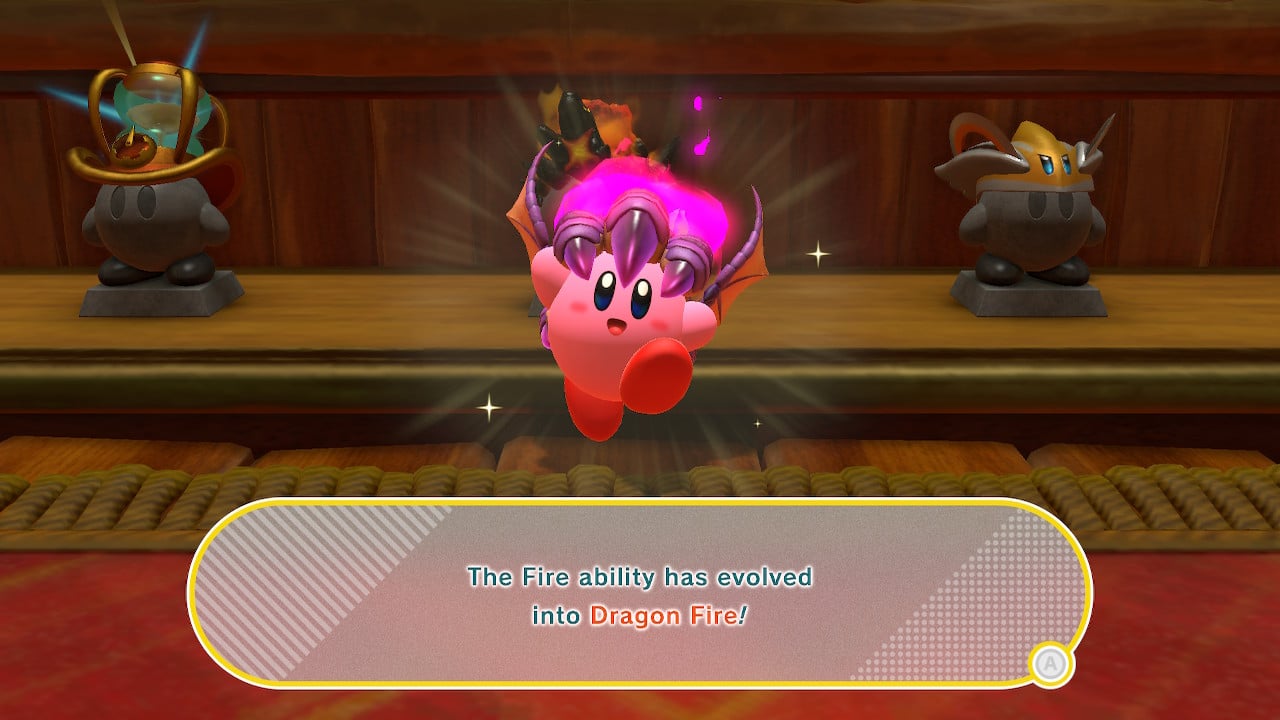
Finally, back at Waddle Dee Town, you can engage in minigames, purchase collectible capsule toys out of machines, or, later on, battle at the coliseum or listen to the game soundtrack. The minigames are short, simple, and a great way to earn coins fast, with my favorite being one where you have to serve the right lunch order to all the Waddle Dees. All of these minigames and other features are optional, but they provide yet even more ways to enjoy the game.
The only thing Kirby and the Forgotten Land is lacking is story, which isn’t actually a bad thing. It makes for a wonderfully paced gameplay experience. In fact, it’s actually funny how almost the entire story is backloaded into the end of the game. That may disappoint hardcore lore fans, but there is still arguably a lot of environmental storytelling at work. Again, that pseudo-Migdar comes to mind. Plus, the soundtrack is spectacular from start to finish. It is every bit as delightful as the environments, if not even more so.
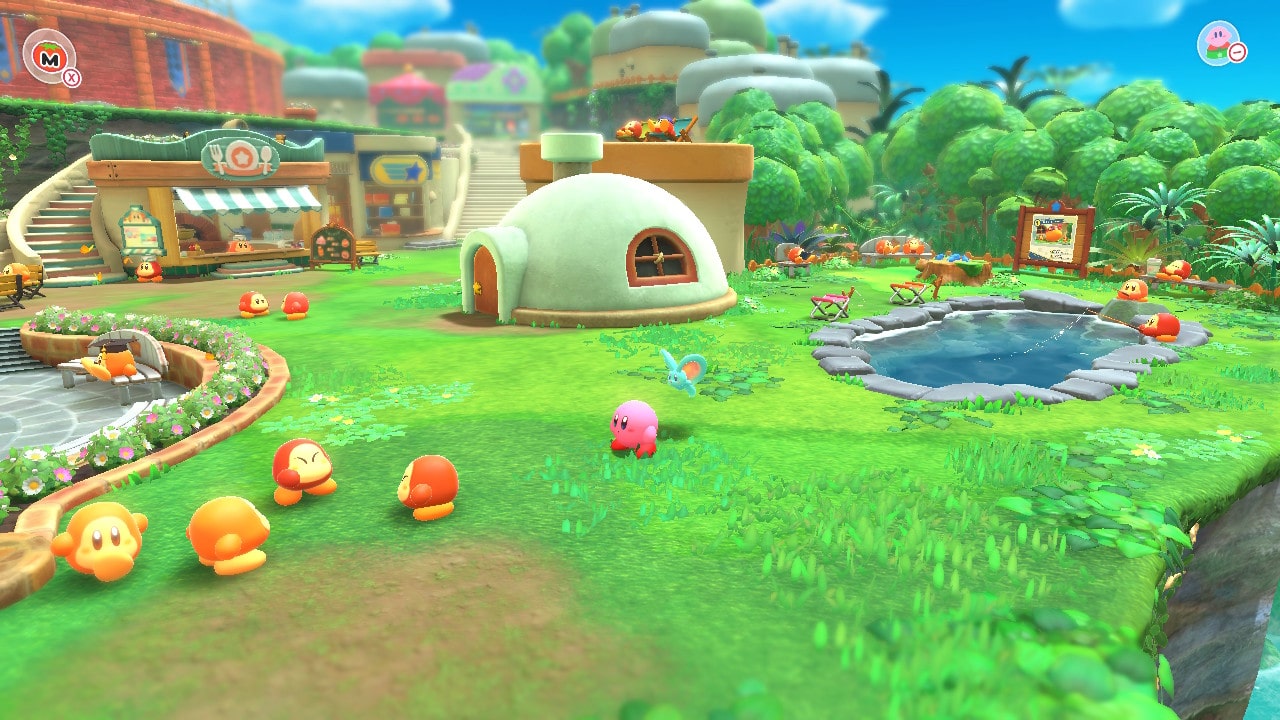
The Review Verdict on Kirby and the Forgotten Land
You don’t need to love Kirby to love Kirby and the Forgotten Land. Anyone who enjoys a quality platformer or just family-friendly co-op will find a tremendous amount of entertainment in this game. The vast number of upgradeable abilities and the delightful imagination of Mouthful Mode present constant gameplay variety, and the visuals and sound work in tandem to deliver one of the more memorable experiences Nintendo Switch has ever seen. Kirby and the Forgotten Land is an easy recommendation for almost any Switch owner.
A Nintendo Switch review code for Kirby and the Forgotten Land was provided by the publisher.

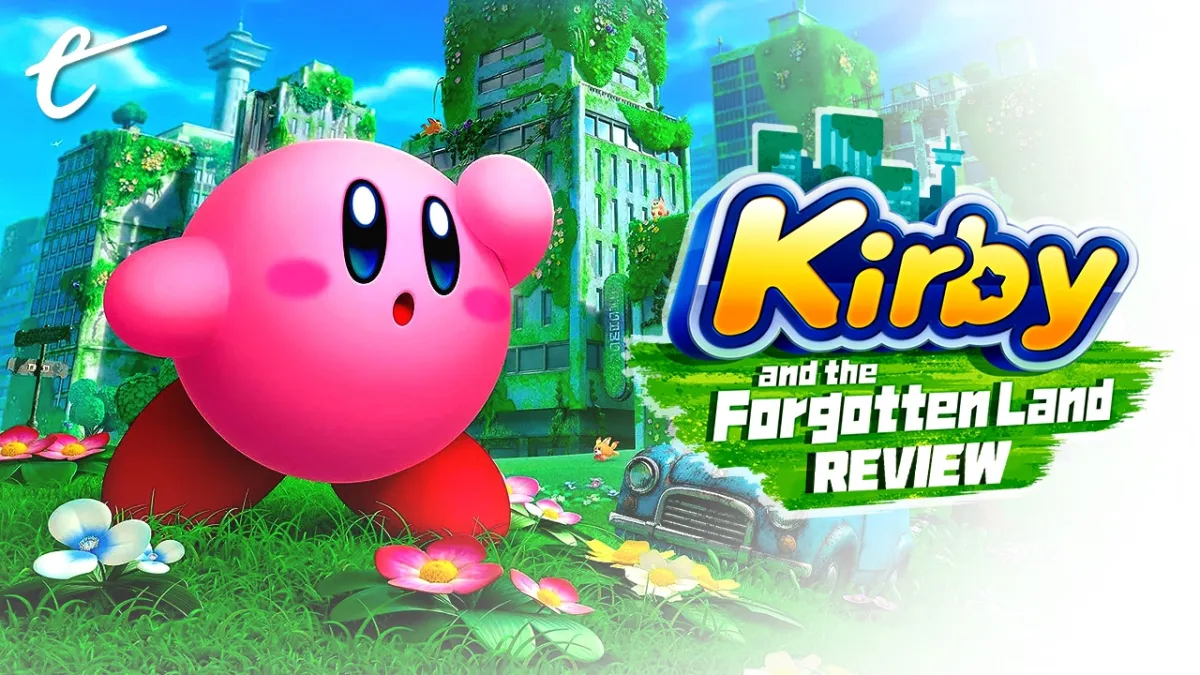




Published: Mar 28, 2022 12:00 pm